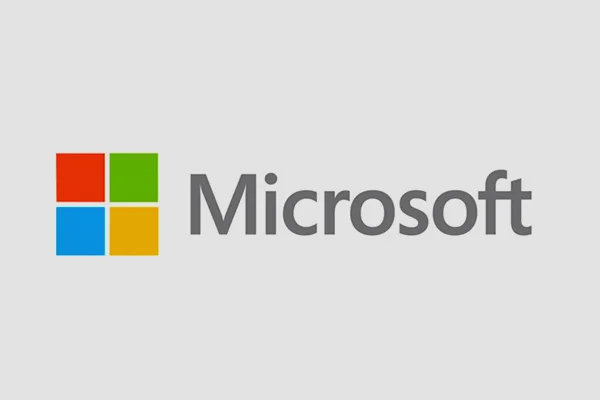What is Cryptojacking in Cyber Security? | Definition, Examples, etc

The cybercrime landscape is constantly evolving. Cryptojacking is the latest trend that has created much buzz. Within a year, it has grown threefold, and the cases are constantly on the rise. Undoubtedly cybercriminals are thriving, but it has made ordinary users contemplate cybersecurity platform that can provide them enhanced security.
In this article today, We will learn about Cryptojacking meaning, Its process, Some of its examples & More.
So Without further adieu, lets get started!
Cryptojacking Definition
( Source credit: Techtalk)
So exactly what is Cryptojacking malware?
Experts define a cryptojacking attack as unauthorized access to a user’s computer or Mobile device using complex mathematical operations with the purpose of mining cryptocurrency, usually without their knowledge.
Cryptocurrencies are attracting more investors each passing day. This has further propelled the malicious cryptojacking activity. In cryptojacking, cybercriminals mine crypto coins through hacked computers. In simpler terms, hijackers use someone’s machine, processing power, battery life and memory to mine cryptocurrency.
This adversely impacts the device’s performance and exposes it to insecure networks, putting device data at greater risk. In some cases, it exhausts devices to reduce their lifespan. It is like using the neighbour’s electricity connection to light up your own home.
Therefore, the need for a robust cybersecurity platform has arisen that can protect devices against such illegitimate use.
is Cryptojacking illegal?
Yes, it is!
It’s where cryptojackers take unauthorized access to somebody else’s computer for cryptocurrency mining by exploiting vulnerabilities or by installing some kind of malicious cryptojacking software to harness computing power without obtaining the consent of a user.
These bad practices can cause significant harm by slowing down your devices increasing electricity costs & violating laws related to unauthorized access & theft of services in many jurisdictions worldwide.
How does cryptojacking work?

Typically involves malware being downloaded in the victim’s computer generally via websites or email attachments containing cryptojacking code.
One of the malware is on the device, it injects itself into the system and web browsers to hijack computing power for cryptocurrency mining without the user’s consent.
This involves using the combination of both download and injection techniques to maximize the effectiveness of the attack.
Main types of Cryptojacking
1. Browser based cryptojacking
This method usually involves running malicious scripts or injecting them into legitimate websites visited by users via web browsers by using the power of the devices of visitors.
Users remain unaware that their Computing resources are being exploited, which leads to slow & poor performance and increased energy consumption.
2. Host based attacks
In this, the attacker directly installs the malware on the victim’s computer or server which runs in the background using the resources of the host with the aim of cryptomining without the permission of the users.
There is a high chance of your sensitive information getting compromised if the malware spreads across the network.
Cryptojacking Example
Below are some of the victims according to the ENISA 2021 threat landscape report.
1. Coinhive
Coinhive became extremely popular due to being widely used in cryptojacking attacks!
For instance, in 2018, many Government websites in countries like the UK, USA, and Australia were found to be compromised using cryptojacking scripts.
2. European water utility control system
This took place in 2021 when the hackers reportedly targeted the water utility control system in Europe using ransomware attacks, which sometimes involve threats of cryptocurrency demands.
3. Microsoft Store

In Jan 2020, 8 apps from the Microsoft Store were found to be secretly mining Monero cryptocurrency in the background by pretending to be a computer system utilities & image file converter tool.
4. Los Angeles Times’ Homicide Report page
In 2018, the Los Angeles Times Homicide Report page was compromised with Coinhive’s JavaScript code, which was found out later after the users complained about their system getting slower after visiting the webpage.
Botnets are the culprit
It has been observed that cryptojacking is facilitated through botnets that target vulnerabilities in internet-connected systems. This includes web servers, VPN gateways and even platforms that deliver cloud applications.
How to detect Cryptojacking?
Deteriorated system & device performance or overheating are some of the most common symptoms of crypto mining malware. However, being common in nature, they can be difficult to detect & overlooked quite easily. If you encounter any of the below-mentioned situations, you should start investigating into possibilities of cryptojacking:
- Slow or deteriorated system performance
- Overheating
- Sharp increase in central processing unit (CPU) usage without any reason
- If something in the system changes on its own
What to do when crypto mining is detected?
- In the case of in-browser JavaScript attacks, immediately kill the browser tab running the cryptojacking script. Note the website URL. You can block it by updating the company’s web filters. Several anti-crypto mining tools can help you prevent attacks of this nature in future.
- Sometimes, the browser is infected by an extension. Even after closing the tab, the problem will not be resolved in such a situation. Remove unrequired extensions and update all the extensions.
- Think from the attacker’s perspective and find the loose ends that might help him hijack your system.
- Introduce advanced cybersecurity tools such as the NewEvol platform to provide 360-degree protection to your system.
How to prevent cryptojacking?
Using the below methods & best practices can help to prevent all types of malware attacks!
1. Using Strong comprehensive Cybersecurity Program
Includes regularly updating your antivirus and anti-malware network security software, Which will help you detect malicious code and block attempts before they compromise your system.
2. Use Ad Blocker and Disable JavaScript

Useful in preventing scripts from running into your browser which often gets embedded in ads or websites without knowledge.
3. Use Software Composition Analysis (SCA)
Helps in identifying and managing open-source components and libraries in your software stack, which you need to keep updating to reduce the risks of a vulnerability.
4. Block Infected Websites
Avoid visiting websites that you find to be suspicious or untrustworthy.
Always make a habit of following a cautious approach to your browsing to prevent inadvertent exposure to such threats.
5. Use Browser Extensions
Using an extension such as CoinBlockerLists will help you detect & block scripts from running in your browser without your permission.
How Can NewEvol Help You?
Looking to effectively manage and defend your organization against cryptojacking activities?
Check our products like the SIEM solution for real-time monitoring, SOAR solution for automated incident response, Data Lake solution for centralized data analysis, cyber threat intelligence solutions for proactive threat detection, Security operations platform to identify anomalies & threat hunting platform to search for the signs of any malicious activity.
These tools will not only help you in seeking but also in mitigating cryptojacking threats.

